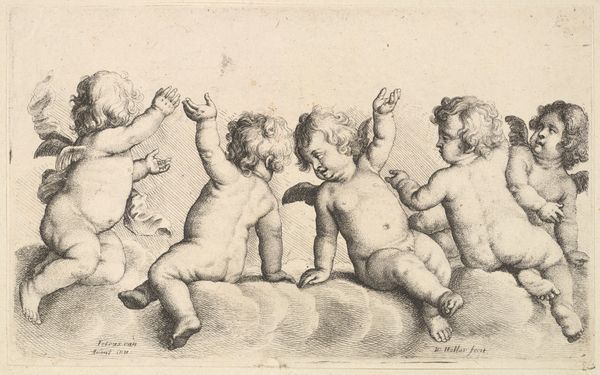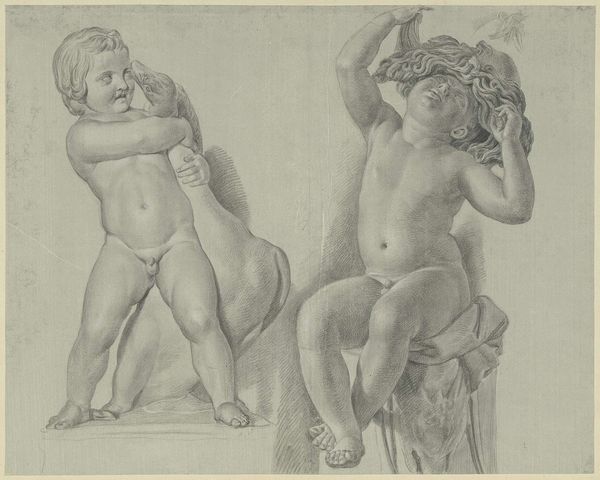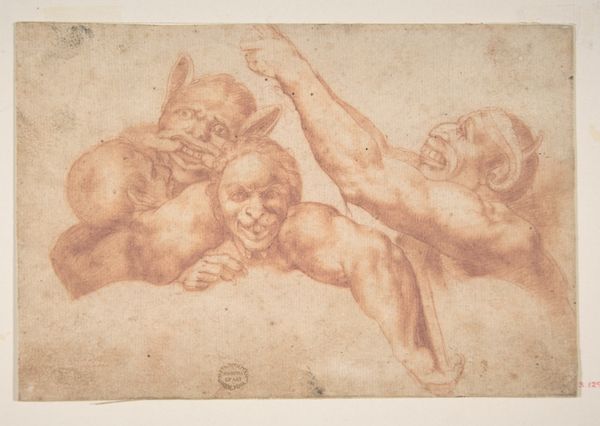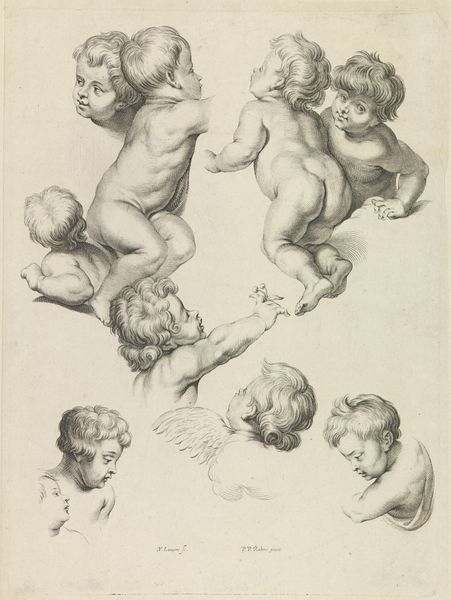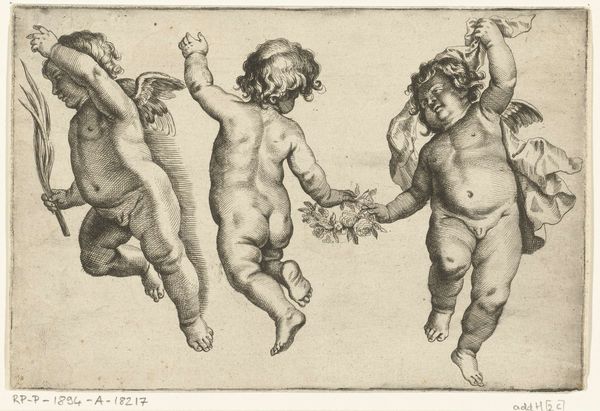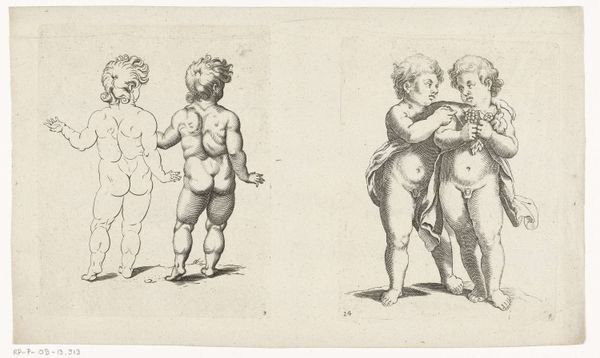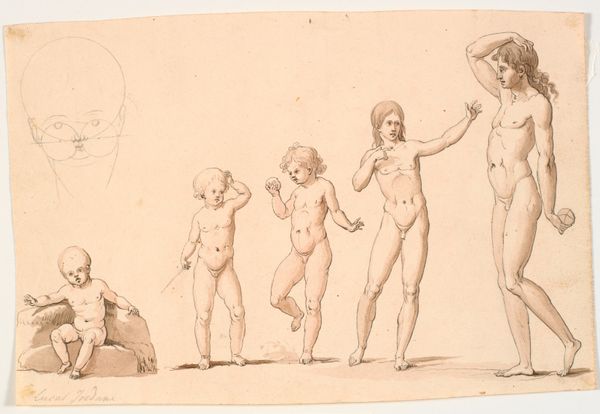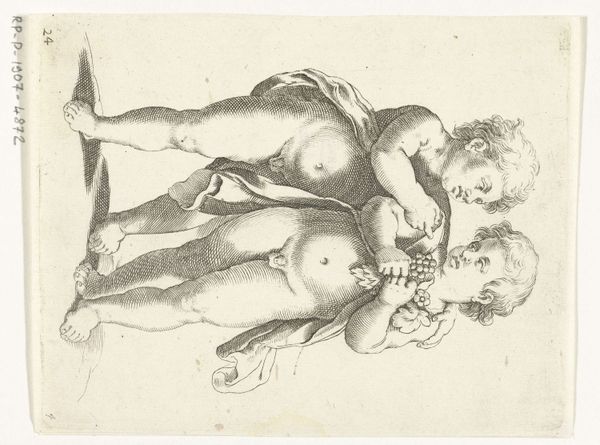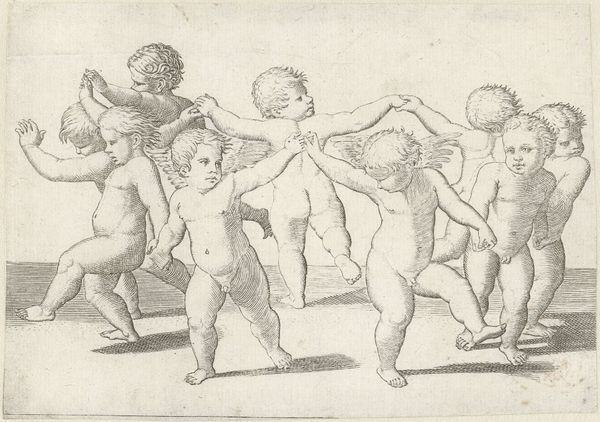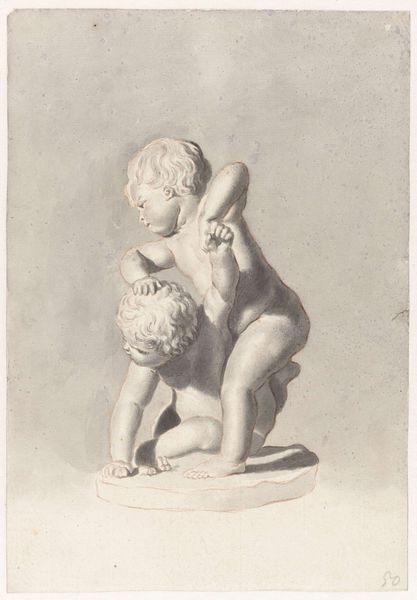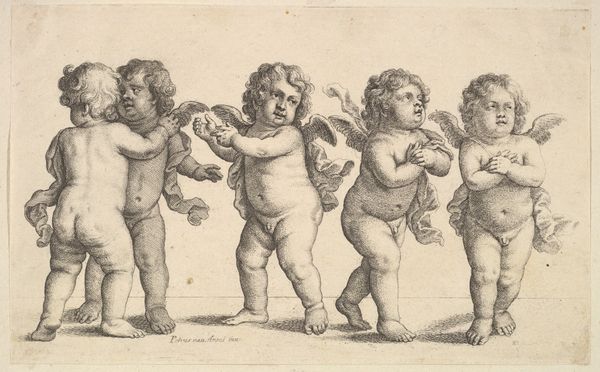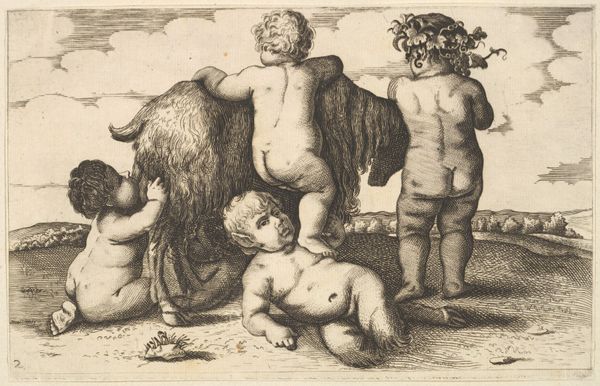
drawing, paper, ink, charcoal
#
portrait
#
drawing
#
baroque
#
charcoal drawing
#
figuration
#
paper
#
ink
#
charcoal
#
nude
#
watercolor
Dimensions: height 157 mm, width 193 mm
Copyright: Rijks Museum: Open Domain
Editor: This drawing, "Drie dansende kinderen," or "Three Dancing Children," by Jan de Bisschop, created sometime between 1648 and 1671, is rendered in charcoal and ink on paper. What strikes me most is how solid and weighty the figures appear, despite the lightness of the medium. What do you see in this piece from a formal perspective? Curator: I note primarily the masterful use of line and shadow to create a sense of volume and movement. Observe how de Bisschop employs hatching and cross-hatching to model the forms of the children, giving them a sculptural presence. The dynamism inherent in their poses is further emphasized by the swirling lines that suggest their dance. Do you see how the composition creates a circular flow? Editor: Yes, their linked hands and the implied movement definitely lead the eye around. I am also noticing the varying line weights, thicker in some areas to define contours, thinner in others for softer modeling. How do those formal choices influence our reading of the work? Curator: The strategic deployment of line weight and tonal variation guides our perception of depth and texture, creating visual interest and reinforcing the illusion of three-dimensionality on a two-dimensional surface. Furthermore, the use of a monochromatic palette—ranging from light washes to dark, dense strokes—forces us to concentrate on the pure structure of the forms. De Bisschop distills the scene to its essential visual elements, emphasizing the underlying geometric forms and rhythmic organization. Editor: That's fascinating. Focusing on those choices really does make me appreciate the drawing in a new way. It's so much more than just a quick sketch; it's a very deliberate arrangement of form and line. Curator: Indeed. It is through these formal qualities that the artist conveys a sense of energy, grace, and timeless beauty. By engaging in a close reading of the visual language, we discover the inherent artistic merit embedded within this deceptively simple drawing.
Comments
No comments
Be the first to comment and join the conversation on the ultimate creative platform.
